The Death Studies Podcast – Book promo, May 1, 2024
Suicide Research Symposium – Paper presentation, April 18, 2024
Popular Culture Association conference – Paper presentation, March 29, 2024
Steven Jay Rubin’s Saturday Night at the Movies – Special guest podcast appearance, March 25, 2024
Villanova University Talk Series – Panel discussion, March 21, 2024
Eastern Sociological Society conference – Author Meets Critics panel, March 1, 2024
The Story Cafe – Author’s table, Nov. 11 & Dec. 2, 2024
WXVU Morning Roar – Special guest radio show appearance, Nov. 10, 2023
The Philadelphia Inquirer – Letter to the editor, June 7, 2023
Villanova University Falvey Library – Library talk, April 13, 2023
Popular Culture Association conference – Paper presentation, April 6, 2023
Eastern Sociological Society conference – Paper presentation, Feb. 26, 2023
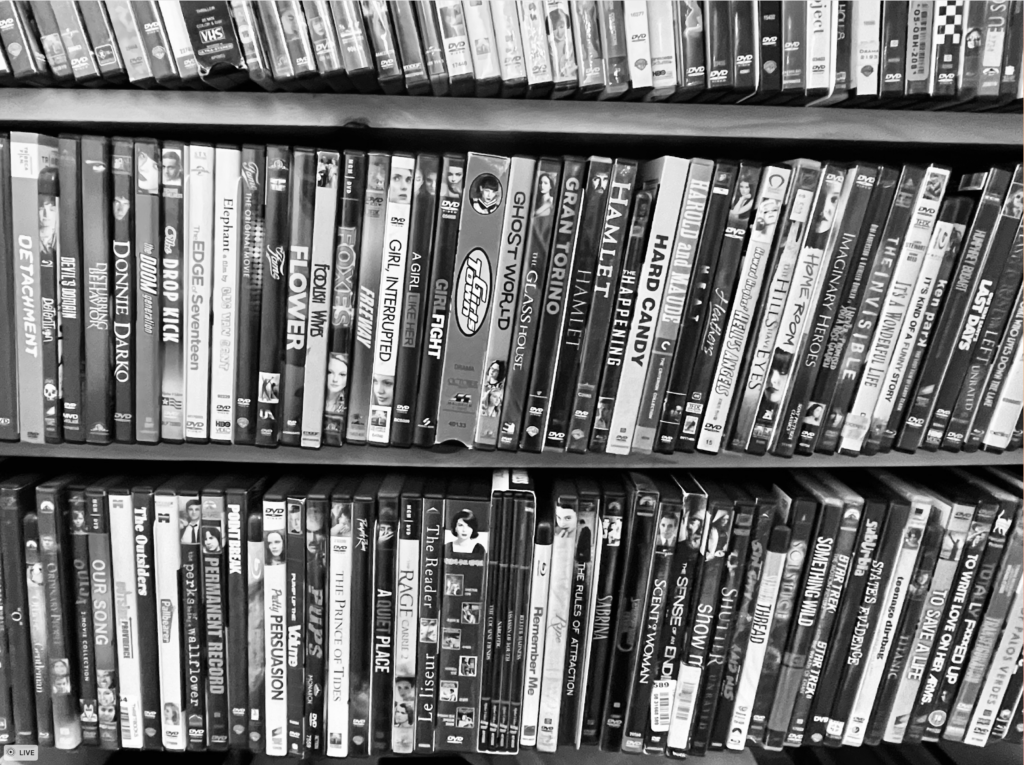
Talking about suicide through film
Society for the Study of Social Problem – Paper presentation #2, forthcoming Aug. 9, 2024
Suicide can be considered a form of violence: violence against the self (Seggi, 2022; Kandel Englander, 2012). By becoming the second leading cause of death among young people, it has turned into a public health crisis (AACAP, 2018; AFSP, n.d.; Drapeau & McIntosh, 2020; Rahhal, 2019; Vanorman & Jarosz, 2016; Vanorman & NCIPC, 2019; Wan, 2019).
Hence, it is not far-fetched to think that any number of students in our classrooms might have been affected by suicide and suicidal behavior, either as survivors or bereaved. Yet, because of their close proximity to suicidality, and the still widespread stigma attached to it, students might be understandably reluctant and uncomfortable to directly discuss suicidality in the classroom. They might nevertheless become exposed to numerous instances of suicidality in the media and social media (13 Reasons Why (2017), Mare of Eastown (2021), and Butter (2022), to name a few), all the while possibly feeling unequipped to grasp them.
In light of all this, studying films with instances of suicidality in the classroom can provide the much-needed buffer that allows people to gain enough distance from suicide and suicidal behavior to actually talk about it. A well thought-out media literacy strategy can empower students vis-à-vis these films, while opening up for them the wider social context for suicidality (Seggi). The set of questions that make up such media literacy strategy are posed from the perspective of a young person watching these films. They are divided into four parts: Questions about the young audience vis-à-vis the films; questions about the portrayal of suicide in these films; questions around issues of authenticity in the cinematic portrayal of suicide and issues of marketability; questions around how the young audience can become a media maker.
—
AACAP. (2018, June). Suicide in children and teens. Retrieved May 14, 2020, from https://www.aacap.org/AACAP/Families_and_Youth/Facts_for_Families/ FFF-Guide/Teen-Suicide-010.aspx
AFSP. (n.d.). Speaking out about suicide. https://www.datocms-assets.com12810/ 1588002792-13739afspspeakingoutaboutsuicideflyerm1.pdf
Drapeau, C. W., & McIntosh, J. L. (2020). U.S.A. suicide: 2018 official final data. American Association of Suicidology. https://suicidology.org/wp-content/ uploads/2020/02/2018datapgsv2_Final.pdf
Kandel Englander, E. (2012). Understanding violence. Psychology Press.
Rahhal, D. (2019, October 17). Alarming report reveals suicide rates have risen 56% in a decade among young Americans. Daily Mail. Retrieved October 19, 2019, from https://www.dailymail.co.uk/health/article-7584529/Alarming- report-reveals-youth-suicide-risen-56-past-decade.html
Seggi, A. (2022). Youth and suicide in American cinema: context, causes, and consequences. Palgrave Macmillan.
Vanorman, A., & Jarosz, B. (2016). Suicide replaces homicide as second-leading cause of death among U.S. teenagers. Population Reference Bureau. https:// www.prb.org/resources/suicide-replaces-homicide-as-second-leading-cause- of-death-among-u-s-teenagers/
Wan, W. (2019, October 17). Teen suicides are increasing at an alarming pace, outstripping all other age groups, a new report says; The disturbing trend worries researchers who have struggled to understand its causes. Washington Post Blogs. https://www.washingtonpost.com/health/teen-suicides-increasing-at- alarming-pace-outstripping-all-other-age-groups/2019/10/16/e24194c6- f04a-11e9-8693-f487e46784aa_story.html
Youth and suicide in American cinema: Silence and its repercussions
Society for the Study of Social Problem – Paper presentation #1, forthcoming Aug. 9, 2024
This presentation analyzes the portion of cinematic portrayals of suicide that illustrates the repercussions of silence.
The Importance of youth and suicide in American cinema
The Death Studies podcast – book promo, May 1, 2024
Hosted by Bethan Michael-Fox and Renske Visser, the May 1 episode of The Death Studies podcast opens with a 3-minute promo of my book–I discuss not only the importance of analyzing youth and suicide in film, but of offering young audiences tools to question the media. This episode then goes on to talk about transnational dying with Yasmin Gunaratnam.
Read more about this episode here!
Listen to the podcast on Spotify here!
The Papageno effect: With help comes hope; and with both comes growth
Suicide Research Symposium – Paper presentation, April 18, 2024
This presentation further develops a portion of a large multidisciplinary study, which mapped the portrayal of suicidality in US youth films both qualitatively and quantitatively, from the early 20th century till 2019 (N = 186). In particular, in light of recent research conclusions that point to how media portrayals of help seeking, hope and recovery may possibly exemplify the protective effect of media—the Papageno effect—I analyze the narrow extent and the nevertheless compelling manner in which help seeking on the part of suicidal individual is depicted in youth films from both a media effects and media literacy perspectives. First, I discuss the few understated yet persuasive depictions of help seeking in youth films. Beyond the Lights (2014), It’s Kind of a Funny Story (2010), and nominally Charlie Bartlett (2007) underscore how help—offering it, seeking it, and getting it—can be challenging, yet essential to
one’s recovery and growth. Second, I offer examples of media literacy strategies that young
audiences can use to internalize the importance of seeking help when in a crisis.
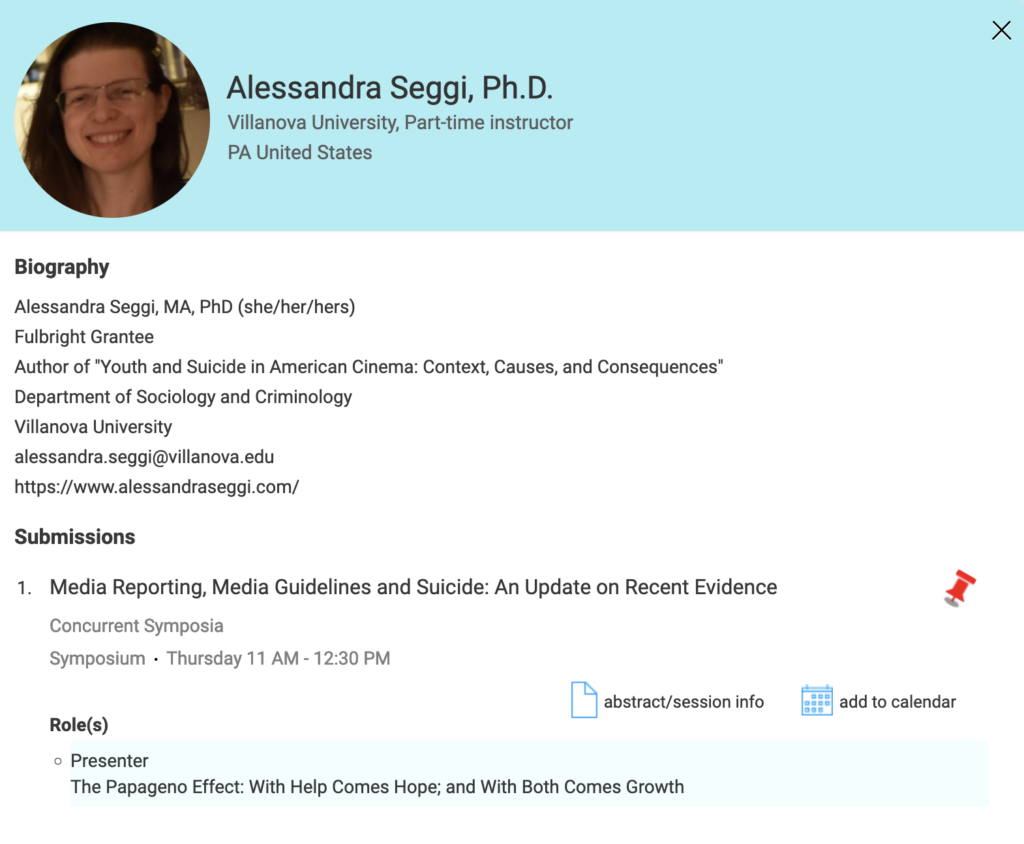
Bang bang, you’re (socially) dead
Popular Culture Association annual conference – Paper presentation, Chicago, IL, March 29, 2024
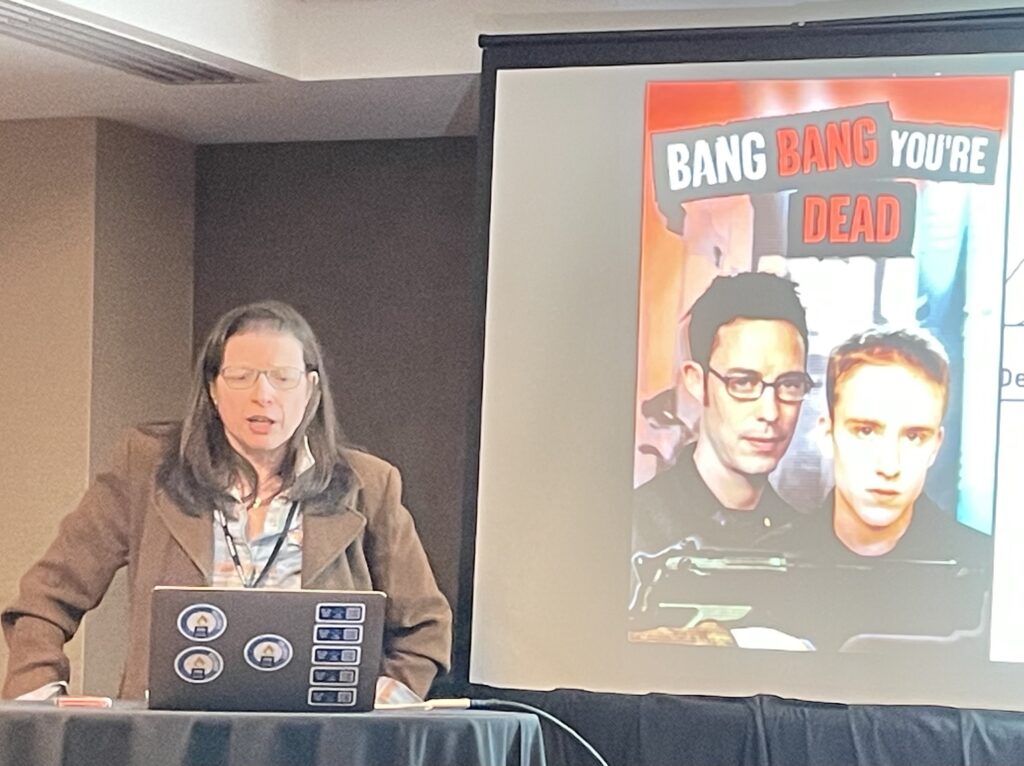
The film Bang Bang You’re Dead indirectly discusses critically important social processes around youth suicidality. Directed by Guy Ferland and released in the early 2000s, when school shootings definitively rose to prominence in American society, this film offers us a chance to reflect on several facets of relationality: suicidal behavior as well as social death, bullying, depression, and social conformity. In turn, fascinating yet insidious social mechanisms such as the self-fulfilling prophecy, the role of both by-standers and helping witnesses, and the healing power of art come to the fore. They all show us how as individuals we are inevitably shaped by social groups (both those we might abhor and those we might strive to belong to), no matter how independent or isolated we think we are. All in all, Bang Bang You’re Dead offers an unvarnished look into critical social issues that have become all the more pressing since the film’s release.
Suicide & Archie’s Final Project
Steven Jay Rubin’s Saturday Night at the Movies – Special guest podcast appearance, March 25, 2024
I discussed the portrayal of suicide in several youth films across the decades–from It’s a Wonderful Life to Rebel without a Cause; from The Slender Thread to Heathers–along with David Lee Miller, director of Archie’s Final Project.
Listen to the podcast on Apple Podcasts here!
Listen to the podcast on PodBean here!
Listen to the podcast on Podcast Addict here!
Listen to the podcast on Spotify here!
Systemic issues around youth and suicide
Villanova University Talk Series – Panel discussion, Villanova, PA, March 21, 2024
I conceived of and organized a talk series on systemic issues around youth and suicide. I also moderated the first panel on March 21, which you can watch in its entirety below.
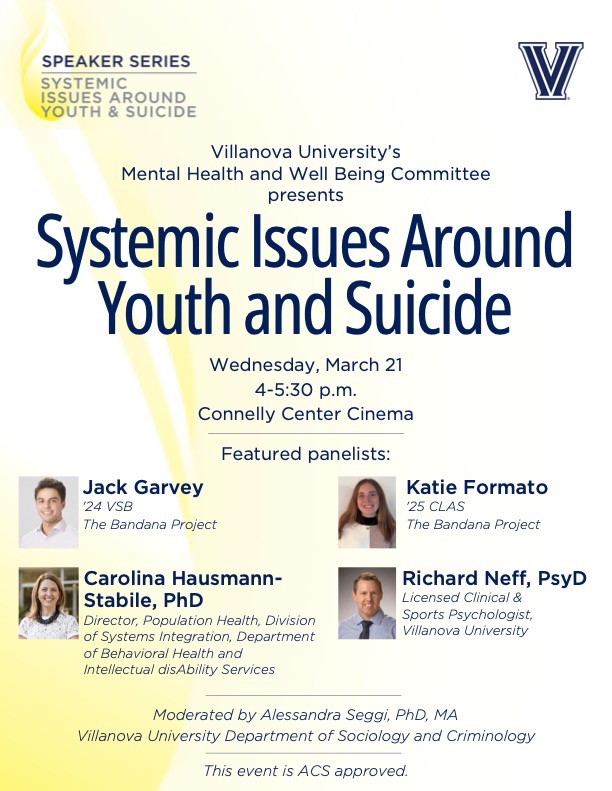
Youth and suicide in American cinema
Eastern Sociological Society annual conference – Author Meets Critics panel discussion, Washington D. C., March 1, 2024
Shaun Vigil, Editor, Temple University Press, served as moderator for a panel discussion about my book Youth and suicide in American cinema: context, causes and consequences. The scholars who served as panelists are as follows:
Mary Chayko, Communication, Rutgers University
Susan Mackey-Kallis, Communication, Villanova University
Diana Papademas, SUNY Old Westbury
Julia Sonnevend, Sociology & Communication, The New School for Social Research
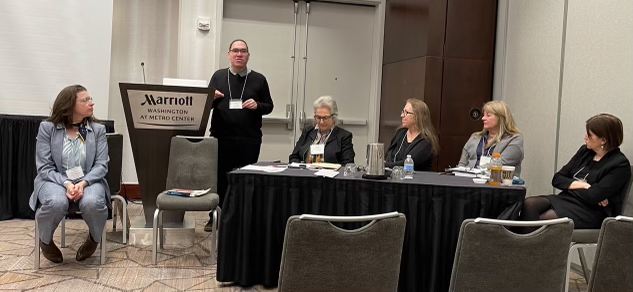
Read more about the Author Meets Critics panels here!
The connection between youth and suicide
The Story Cafe – Author’s Table, Ardmore, PA, Nov. 11 & Dec. 2, 2023
Spontaneous conversations with people in the cafe in order to raise awareness about the connection between youth and suicide.
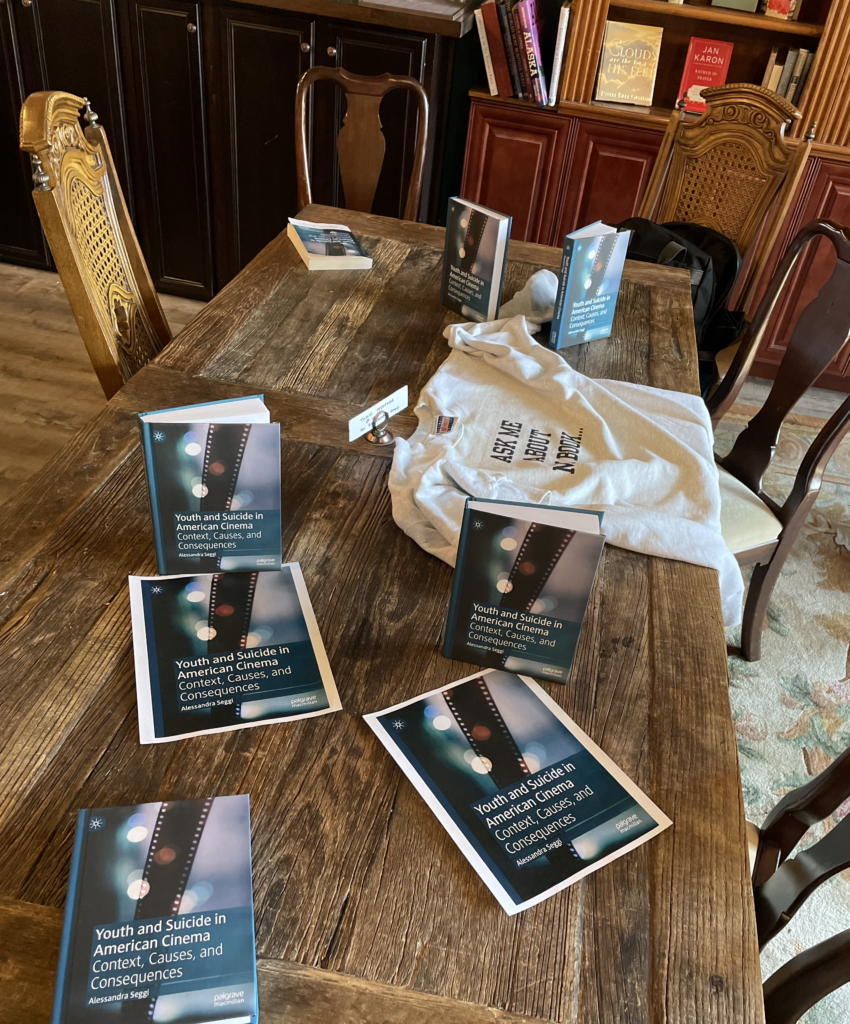
Youth, mental health and suicide
WXVU Morning Roar – Special guest radio show appearance, Nov. 10, 2023
Discussion of the book Youth and suicide in American cinema in the context of youth mental health, as well as new project called It’s a Zoo: Society Illustrated.
Open conversation
The Philadelphia Inquirer – Letter to the editor: Open conversation, June 7, 2023
Letter to the Philadelphia Inquirer editor about the importance of addressing young suicide deaths as such:
By not addressing suicide deaths, we end up robbing our students of the chance to grieve together, to make sense of what, for most of us, is unthinkable, yet suddenly very real. With that silence, we are also perpetuating the stigma that makes suicidality so much more difficult to deal with. We are making it harder for students to reach out for help. By not addressing the suffering of the suicidal student, we end up ignoring them and the immensity of their pain. We owe it to our young, whose well-being and education we’re all committed to, to gently give them a straight answer. Life is hard. Suicide is not the solution.
Read the entire letter to the editor here!
All the silence we don’t talk about
Villanova University Falvey Library – Library Talk, Villanova, PA, April 13, 2023
A large project examined the portrayal of youth and suicide in American films (N=187) from 1900 to 2019, with particular attention to the context, causes and consequences of suicide. It also teased out insidious yet fascinating social dynamics around suicidality involving both the suicidal individual and their friends and family. The analysis concluded that the portrayal of youth and suicide in film is controversial, or at least unbalanced, inconsistent, limited, and at times simplistic. Other times it can be stifling in its brutal honesty, yet rich and thought-provoking. Hence, rather than obliterate or block certain content from reaching audiences, or suggest certain reactions to audiences, young audiences need to think for themselves and question the media.
A proactive approach for audiences to interpret film messages can help youth—a media literacy strategy to embrace as active social players, while watching these films. This is a tool for empowering audiences, and helping them watch and analyze films as engaged citizens, and ultimately “for strengthening young people’s participation in civic and political life” (Hobbs, 2011, p. 421–422). Indeed, only when audiences are able to tease apart the varied, nuanced, transient, complex media messages, are they able to negotiate meaning for themselves, act as engaged social players, and perhaps begin to comprehend suicidality, and “heal the hearts or settle the minds of those left behind in its dreadful wake” (Jamison, 1999, p. 18).
Importantly, silence, by intruding into several interactions, dramatically alters them. Yet, it rarely gets talked about. So, for example, the physical and emotional consequences of suicidality on the suicidal individual are almost never tackled in film. The consequences of suicidality on the bereaved are even more infrequent object of conversation. There are yet other ways for silence to complicate relationships and affect someone’s suicidality. Silence hides complicity, when not voicing our concerns when we have some, or not speaking up in front of injustice, or not seeking help when in a crisis. It also demonstrates how we become complicit in perpetuating injustice, how we might aggravate our condition, or how we might perpetuate a life in suicidal mode, as well as perpetuating the path of least resistance. Only a few films, notably Captain Fantastic, Permanent Record, and Surviving Family, offer a vivid depiction of the desolation that friends and family experience after a suicide. Beyond the Lights shows how being embedded in a web of social relationships can offer the suicidal individual mixed messages—on the one hand, suicidality is not to be talked about; on the other, asking for and receiving help are essential steps in one’s recovery. A few other exceptional films from different eras and with varying styles, such as A Girl Like Her, Something Wild and Full Metal Jacket, showcase how silence exacerbates the consequences of trauma.
—
Hobbs, R. (2011). The state of media literacy: A response to Potter. Journal of Broadcasting & Electronic Media, 55(3), 419–430. https://doi.org/10.108 0/08838151.2011.597594
Jamison, K. R. (1999). Night falls fast: Understanding suicide. Vintage Books.
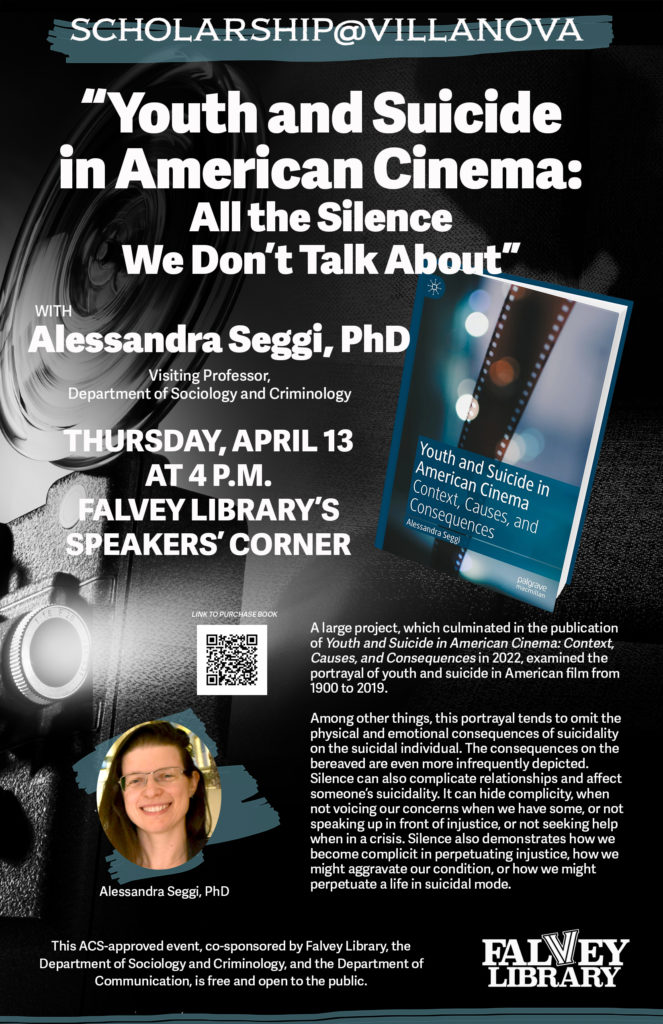
Recurrent life themes
Popular Culture Association conference – Paper presentation, San Antonio, TX, April 6, 2023
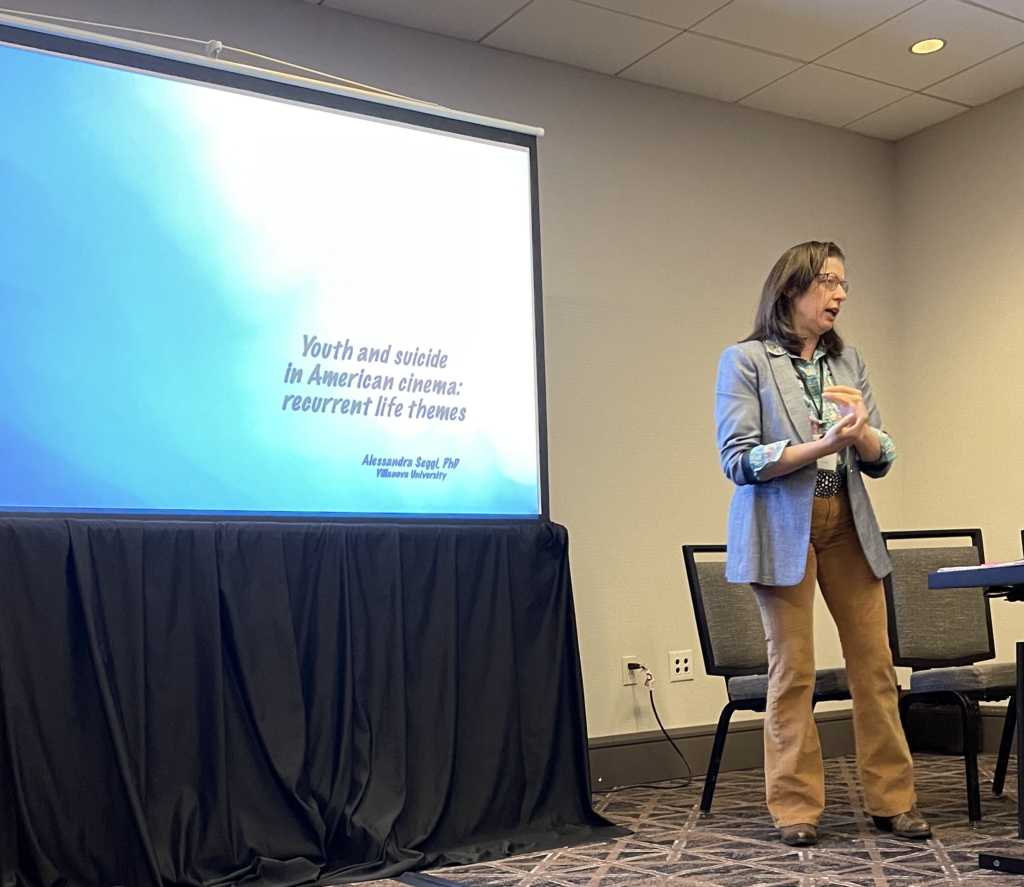
Sample films about youth and suicide (from the 1900s to the 2010s) highlight recurrent life themes that, while stemming from the suicidal behavior itself, stretch well beyond it. Relationality emerges as constitutive of social life. Silence hides complicity, when not voicing our concerns when we have some, or not speaking up in front of injustice, or not seeking help when in a crisis. It also demonstrates how we become complicit in perpetuating injustice, how we might aggravate our condition, or how we might perpetuate a life in suicidal mode, as well as perpetuating the path of least resistance. Death, loss, bereavement, and grief distinctively embody the human condition. Violence imbues virtually every aspect of social relations. Suicide emerges as only one form of violence amidst many.
Suicidality emerges as a symptom of wider issues related to adolescent experiences: the anxious sense of in-between-ness; the compounded anxiety of youth who are marginalized because of one or multiple aspects of their identity, whether sex, gender, sexuality, race, ethnicity or origin; the range of violence youth experience in their lives directly, and via media and technology; the overall success- and happiness-oriented discourses and cultural practices that dictate silent self- reliance and toughness as signs of normalized masculinity. This masculinity is both hegemonic and toxic; it uses violence while in search of identity (Rebel without a Cause, A Clockwork Orange, and Pups) or while abusing power (as in Something Wild, Full Metal Jacket, and Trust).
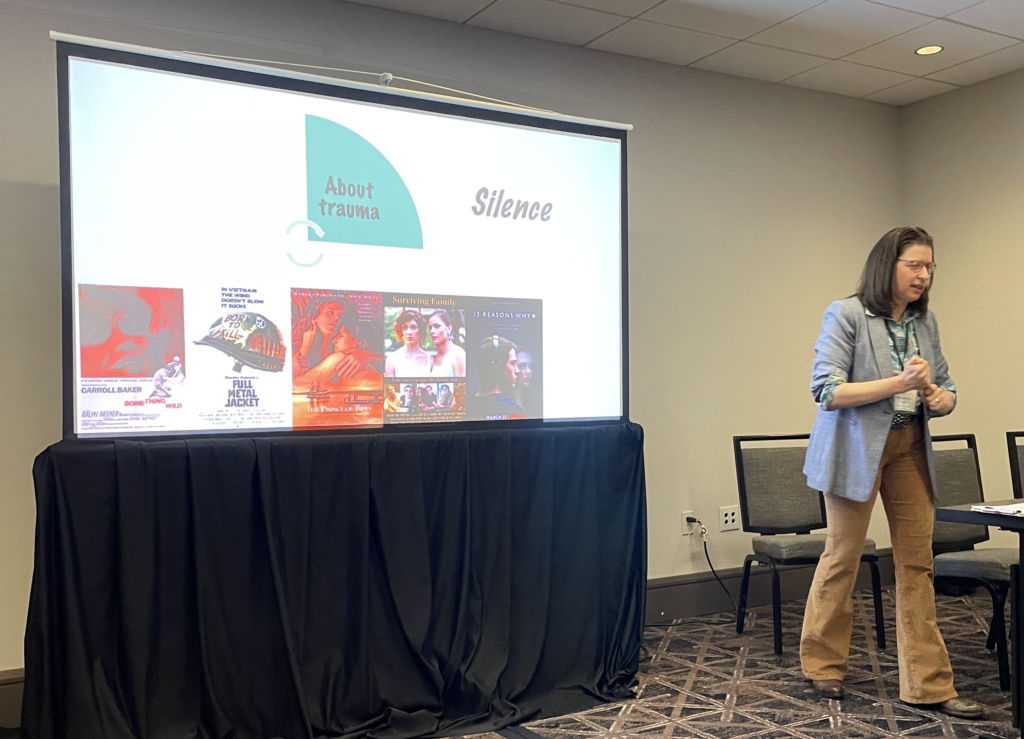
Browse the 2023 PCA conference program here!
Strains in social relationships
Paper presentation – Eastern Sociological Society conference, Baltimore, MD, Feb. 26, 2023
Like in life, understanding the repercussions of a suicide in a film is a way of understanding suicide itself. Yet, films infrequently discuss the physical and emotional consequences of suicidal behavior on the suicidal individual. My research findings (from a sample of 187 films with youth and suicide, selected from the 1900s to the 2010s) show how cursorily the suicidal character’s suffering is usually treated—the more action packed the film is, the less the character’s suffering is addressed. The suffering of the bereaved and the suicidal individual is one of the consequences of suicide that most films neglect to address. When films tackle the ripple effects of suicide, they tend to highlight the emotional consequences on the bereaved, but not the suicidal individual.
In connection to their overall messages about youth and suicide, the sample films also bring up several instances of strain in social relationships that expand our understanding of what they say about suicide in society. The first tension expresses divergent views about the consequences of suicidality for the suicidal individual; all other forms of strain focus on the reactions—feelings, thoughts, and actions or inaction—of the bereaved. By poring over them, we can learn a great deal about suicidal behavior.
0 Comments